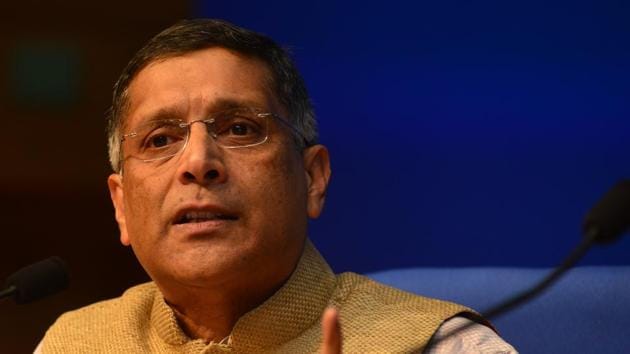GDP issue: Ex-CEA cherry-picked data for growth paper, says PM’s council
In a research paper, Subramanian, who stepped down last year, said India’s economic growth rate has been overestimated by around 2.5 percentage points between 2011-12 and 2016-17.
Prime Minister Narendra Modi’s economic advisors on Wednesday challenged former chief economic advisor (CEA) Arvind Subramanian’s claim that India’s gross domestic product (GDP) was over-estimated for most of this decade.

Economic Advisory Council to the Prime Minister, or PMEAC, comprising economists Bibek Debroy, Rathin Roy, Surjit Bhalla, Charan Singh and Arvind Virmani rejected the methodology adopted by Subramanian in a recent paper which concluded that changes adopted in the estimation of India’s GDP for the period since 2011-12 have led to a “significant overestimation of growth”.
The actual average GDP growth for the period between FY12 and FY17 may have been about 4.5%, sharply lower than the official estimate of about 7%, Subramanian argued in a paper titled India’s GDP mis-estimation: likelihood, magnitudes, mechanisms, and implications published by the Center for International Development at Harvard University.
Officials had started work on the new way of measuring national income during the second United Progressive Alliance (UPA) government of Manmohan Singh but it was implemented by the Modi government in 2015. One of the major changes was the use of data available with the ministry of corporate affairs in place of the annual survey of industries. The idea was to use the financial information of companies that apparently captures national income better.
The PMEAC said in a statement the new series was a “far better reflection of reality than the old series”. Subramanian’s paper, the economists said, “would not stand the scrutiny of academic or policy research standards” as it lacked “rigor in terms of specific data sources and description and alternative hypothesis”.
The PMEAC, however, conceded that GDP calculation has always been an imperfect art which involves extrapolation, estimation and sometimes even guestimates based on past trends.
Subramanian claimed in his paper that his findings changed the perception of India’s growth performance after the global financial crisis of 2008-09 from “spectacular to solid”. This, he said, warranted revisiting India’s national income accounts estimation, which he recommended should be a priority for the new government. The PMEAC said efforts are on to improve India’s GDP estimation.
The controversy highlights the doubts experts have expressed on the quality of India’s data, especially, of national income. This is because a significant part of the economy is informal—not captured in databases of business taxpayers or of firms contributing to their workers’ retirement savings. The goods and services tax (GST), introduced in 2017, sought to address this gap by lowering the threshold for indirect tax registration.
The back-casting of GDP data made in 2018 for years prior to FY12 using the new methodology which lowered the previous estimates of economic growth during the UPA regime has given rise to criticism of politicization of statistics. Subramanian argued that his paper only looked at technical and methodological changes in the estimates for the period since FY12.
Ever since Subramanian’s paper came out last week, the government went on a drive to counter it and to buttress India’s claim as a fast growing economy. Indian economy, however, is cooling down amid rising global trade tensions that weigh on business confidence and private investments.
It expanded at 6.8% in FY19, the newly revamped National Statistical Office (NSO) said last month, lowering its earlier estimate of 7%. Prime Minister Modi is attempting to arrest the slowdown by reforming the agriculture sector and by boosting exports.






